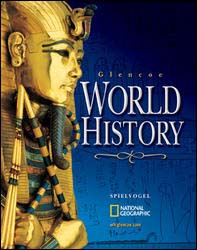Glencoe World HistoryChapter 19:
Industrialization and Nationalism, 1800–1870Chapter OverviewsThe Industrial Revolution and a wave of liberal nationalist revolutions transformed Europe during the nineteenth century. A weakened old order gave way, and a number of unified European states emerged. Canada gained its independence, and the northern and southern United States reunited after a bloody civil war. Section 1 The Industrial Revolution
The Industrial Revolution began in the late eighteenth century and turned Great Britain into the first and the richest industrialized nation. A series of technological advances caused Great Britain to become a leader in the production of cotton, coal, and iron. After the introduction of the first steam-powered locomotives, railroad tracks were laid across Great Britain, reducing the cost of shipping goods. The Industrial Revolution spread to Europe and North America. In the United States, the railroad made it possible to sell manufactured goods from the Northeast across the country. The Industrial Revolution had a tremendous social impact in Europe. Cities grew quickly, and an industrial middle class emerged. The industrial working class, meanwhile, dealt with wretched working conditions. These conditions gave rise to socialism, a movement aimed at improving working conditions through government control of the means of production. Section 2 Reaction and Revolution
After the defeat of Napoleon, European leaders met at the Congress of Vienna to restore the old order and establish stable borders. Great Britain, Russia, Prussia, and Austria met regularly to maintain the conservative order. Meanwhile, liberalism and nationalism—two philosophies that opposed the old order—were on the rise. Many liberals were middle-class men who wanted a constitution and a share in the voting rights enjoyed by landowners. Liberals tended to be nationalists as well. In 1830, France's upper middle class overthrew the king and installed a constitutional monarchy. Belgium broke free of Dutch control. Revolts in Poland and Italy failed. Economic crisis in 1848 brought a revolt of the French working classes. This time, a Second Republic was formed, under the leadership of Napoleon's nephew, Louis-Napoleon. Revolts followed in Germany and the Austrian Empire. In each case the old order was restored. Section 3 National Unification and the National State
Unification occurred at different times and in different forms throughout Europe and in North America. The Crimean War destroyed the Concert of Europe. A defeated Russia retreated from European affairs, and Austria was isolated. Italian and German nationalists exploited Austria's isolation. Both gained important territory in the Austro-Prussian War and the Franco-Prussian War, and a unified Germany and Italy emerged. Growing prosperity and expanded voting rights helped Great Britain avoid revolution in 1848. In 1852, the French voted to restore their empire. Louis-Napoleon became the authoritarian Napoleon III and ruled until France's defeat in the Franco-Prussian War. Austria granted Hungarians the right to govern their own domestic affairs. In Russia, Czar Alexander II freed the serfs and instituted other reforms. When a radical assassinated him, his son, Alexander III, reverted to repressive rule. The United States endured a costly civil war to settle the conflict over slavery between the Northern and Southern states. After two short rebellions, Canada won its independence from Great Britain. Section 4 Culture: Romanticism and Realism
At the end off the eighteenth century, a new intellectual movement known as romanticism emerged as a reaction to the ideas of the Enlightenment. Romantics emphasized feelings, emotion, and imagination as sources of knowing. Many were passionately interested in the past. They developed a neo-Gothic style in architecture, and created literature, art, and music that worshiped nature and was critical of science and industry. Meanwhile, the Scientific Revolution revived interest in science. The new age of science produced important ideas, such as Louis Pasteur's germ theory of disease and Charles Darwin's theory of natural selection. The influence of the scientific outlook was readily apparent in the work of the realist novelists and artists, who depicted everyday life, including the lives of the poor, in realistic, and unromantic, detail.  | 

















